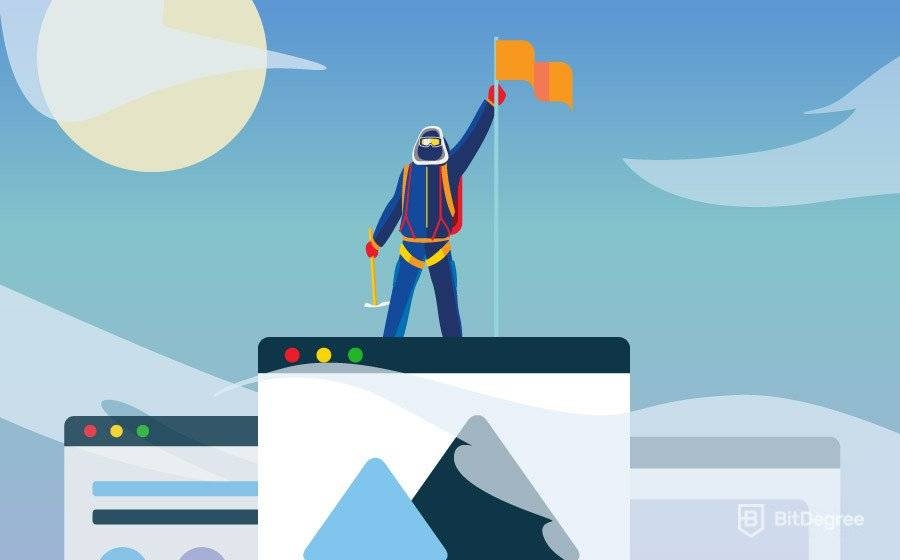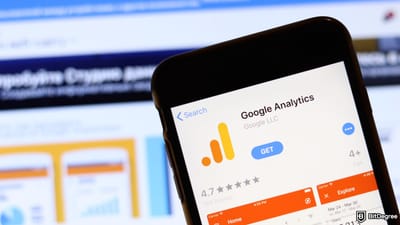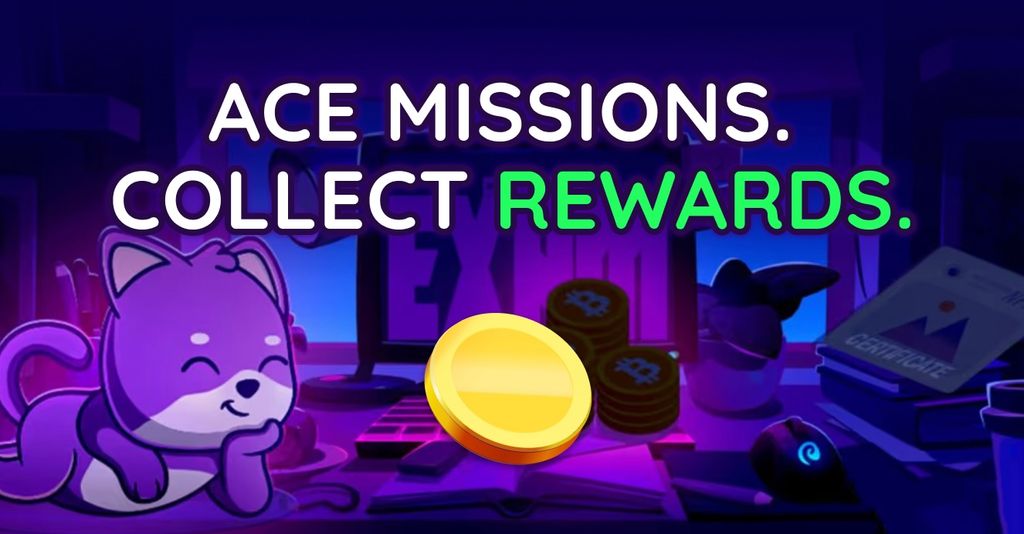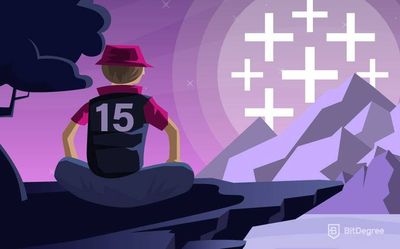Stop overpaying - start transferring money with Ogvio. Join the waitlist & grab early Rewards NOW! 🎁
These days we take websites for granted. If a product or service doesn’t have one, we write it off. Yet, we rarely think about the sheer amount of work that goes into actually making a website. Web designers, developers, hosting providers and many more are all involved in the process. In this tutorial, we will tell you how to become a web designer, the visionary who enables the code monkeys to do their job.
Table of Contents
What Is Web Design?
The best answer to answer the “What is web design?” question honestly is… magic land. Web design is a magic land, where you start with a blank document and make a mockup of an awesome website. Yes, it takes a lot of hard work and hours spent making difficult decisions, but you get something worthwhile in the end. Numerous other people then use your mockup as a guide to carrying out your vision.
Latest DataCamp Coupon Found:Responsibility
Being a web designer is a lot of responsibility, though. This profession is an artist but a great ability to make beautiful websites is not enough. You also need to know the technical side of web development inside out. What if you create something that looks amazing but is even harder for the front end developer to make? You could have chosen a slightly simpler design, which would have taken your developers a fraction of the time to make?
While learning how to become a web designer, it is crucial to understand that it's not web designers only job to make a beautiful website. You also need to know a bunch about optimizing user experience (UX) and the user interface (UI). Why do you need it? Let’s say that you know zilch about UX/UI. You make the website’s design, everyone signs off on it. After months and months of hard work, this site goes live, users start coming in. But there’s a problem.
Understanding The Need
Your users have used similar websites before. They were designed using common UX/UI principles. Your website is completely different, even original. Suddenly, the user sees that he will have to figure out how to use every single feature from scratch. Understandably, he leaves. Would you stay? Most people wouldn’t. That’s why you need UX/UI knowledge while studying how to become a web designer.
So, what is web design? It’s a profession that combines artistic expression and technical skill to create a beautiful product. Web designers need to know the limits of what front end developers can do and how hard it is, as well as the principles of UX/UI to make sure that the way you use the website isn’t too kooky (weird or eccentric).
What is web design for you? A dream job? Good, read ahead.
What Kind of People Become Web Designers?
One of the most important requirements for a web designer is to developed visual thinking. How to become a web designer without talent for visual thinking? Work. Hard. Very very hard. That is your only option if you’re not naturally inclined to effortlessly create beautiful things. Even if you do have a talent for the visual arts, it doesn’t mean that you will be a great web designer.
Aside from the ability to make beautiful website mockups, web designers also need to be analytical enough to understand how the user is going to see the website. They need to be able to successfully combine aesthetics with function, which requires a special kind of person. Fortunately, you aren’t in a bad spot. The fact that you’re looking at a tutorial on how to become a web designer means that you’re at least interested in what it takes.
You can’t become excellent at something without becoming almost obsessively interested in something. That brings us to another quality of great web designers—work ethic. Just like in every other field, a superior work ethic overcomes everything else. You don’t have to be a design savant to become an excellent web designer. You only have to work harder than the good ones. The more talented you are, the less likely you are to work hard at getting better, simply because you’re used to everything coming easily to you.
Becoming a Web Designer
Software
You would be as likely to find a company that would be okay with their web designers doing their work on paper as you would find Bigfoot. So, you will need software to do your work. Professional web design software is extremely complicated to work with. With that said, you can make magical images once you know how to use it properly. It’s well-worth learning web design enough using these programs to at least be competent, even if you decide that the web designer's life isn’t for you.
Which tools are the most popular in the web design world? It depends, though there are a couple of overwhelming favorites.
Adobe Photoshop

When it comes to any kind of image manipulation, Adobe Photoshop is the undisputed king. Adobe Photoshop is so popular that “photoshopping” has become a generic word for any kind of image editing. In fact, instead of asking how to become a web designer, you could ask how to use Photoshop for web design. The two are almost the same. Retouching, composing vastly complicated graphic design images, and making a great-looking website mockup from scratch—all of it is possible with Photoshop.
While Photoshop’s capabilities are only limiting to the greatest masters in the world, it’s also not the easiest piece of software to use. Adobe Photoshop doesn’t have an intuitive interface. You can’t start messing around and make something decent in your first hour of messing with it.
If you designed a website that looked and worked like Adobe Photoshop, your colleagues would likely tell you to go back and try again. Don’t take inspiration from the UX found in Photoshop. There is one thing that can’t be disputed though—if you know what to do, Photoshop is amazing. You have to know what you want to do exactly. You have to know how to do it. Manually. Every single time.
While its manual nature may not be everyone’s cup of tea, it also gives great control to the experts who know how to use it. Also, there’s a key bind for everything and you can add a custom one if there isn’t. Professionals do in minutes what would take an hour for beginners.
The power of Adobe Photoshop is the reason why it’s the most popular program in the world for Web Design. How to become a web designer? Learn to use Photoshop, as the ancient proverb goes. At first, your power is throttled by the complicated nature of the program, but once you get the hang of it, the power breaks free and sweeps away the competition. Photoshop’s popularity also means that there are plenty of free tutorials and courses on how to use it to do absolutely anything you may need. At least that’s good, right?
If you’re interested in seeing what Photoshop is all about, you can download a full trial version of the program and play around with it to decide if you want to buy it or look at other options. Nowadays, Adobe is using the SaaS (Software as a Service) model where you have to pay a monthly subscription to keep using the product. At the moment, the cheapest option costs $9.99 a month for access to Adobe Photoshop alone. Photoshop is arguably the most popular key element of how to become a web designer.
Also, you can learn how to use Photoshop here on BitDegree. Just hop into this course.
Sketch

While Adobe Photoshop is king in web design, Sketch is its younger brother. One of the biggest reasons why Sketch hasn’t dethroned Photoshop is that it’s exclusive to Mac OS, while Photoshop works on Windows and Mac OS. This Mac OS exclusivity is the biggest criticism thrown at Sketch from Web Designers.
Sketch’s payment model is also different from what you can expect from Adobe Photoshop. You pay $99 for Sketch, download it and get a year of free updates. After the year ends, you can still use your version of the program, but you will need to buy the license again to update it.
This allows you to wait for significant updates before paying for the program again. Even split to match a monthly subscription, Sketch is cheaper than Photoshop at $8.25/mo.
If you asked how to become a web designer easily, we would advise you to try Sketch because its interface is significantly more intuitive than Photoshop’s. While you can’t get as deep and make extremely awesome designs, it’s simply easier to get started on Sketch.
While Photoshop has more possibilities, it feels like Sketch gets out of your way and lets you do things, while you have to know how to make Photoshop do anything at all.
At the high-end, we have seen great web designers make incredible prototype websites using both Photoshop and Sketch. For the majority of all websites, you will have to deal with, both programs are just fine.
The sketch is a professional-grade web design program, it might even be better for Web Design than Photoshop is. After all, it was developed for Web Design in the first place. With that said, there’s a huge problem with Sketch. What is it? The sketch is not Adobe Photoshop.
The majority of companies are used to the Adobe Photoshop workflow. Your future colleagues are likely to use Photoshop. If you can’t do everything you learned on Sketch on the other program, good luck getting a job.
Ask someone you know how to become a web designer and the first thing you hear will probably be “Learn Photoshop.”
Some companies look for Sketch Web Designers, though. It’s not entirely hopeless. Get ready to pass on a lot of job offers.
One of the best uses for Sketch in these circumstances is starting with it to learn Web Design. It will get out of your way and let you do what you want more easily than Photoshop would.
After you get a good grasp on the web design using Sketch, that’s when you can pick up Photoshop and learn to wrestle it into doing what you want to do.
If you don’t have a Mac, the Photoshop vs. Sketch decision is made for you, Photoshop wins by default. Start learning how to use Sketch from this design course.
Hardware
No matter which tool you use, you can start learning how to become a web designer on almost any decent computer. Once you start working with complicated compositions, though, you will need to get a good computer or find a job where they will give you one.

In general, web design is more CPU-heavy, though a decent GPU can still come useful. You only need a decent amount of RAM (16GB should be plenty) and an SSD, the standard slow computer fix.
The monitor is also very important. The better the resolution, the more you can see at the same time. That’s not why monitors are extremely important for web designers, though. No, the main reason you should get a good monitor is color accuracy. The cheap monitors usually come with miserable color accuracy scores, caused by the type of screen they use.
A very important detail for those who are learning how to become a web designer is picking the right color for an element or theme of the design could be extremely important, even if the color won't’ be accurately shown for the visitors of the finished website in case they open it on a bad monitor.
Some web designers also swear by design tablets. They are input sources, just like your mouse and keyboard. You connect it to the computer and control it with a special pen.
When you move the pen across the tablet’s surface, the cursor on the screen matches the movement. Professional-grade tablets can even sense how hard you press the pen to the tablet, etc.
Web designers who swear by design tablets often come from a drawing background. They find greater precision and control when they use on instead of the mouse.
On the other hand, there are designers who not only refuse to touch design tablets but the mouse as well. I’ve known an amazing web designer who worked entirely with his touchpad on an old MacBook Pro. It was a sight to behold every time I watched him work.

- Easy to use with a learn-by-doing approach
- Offers quality content
- Gamified in-browser coding experience
- Free certificates of completion
- Focused on data science skills
- Flexible learning timetable

- High-quality courses
- Nanodegree programs
- Student Career services
- Nanodegree programs
- Suitable for enterprises
- Paid certificates of completion

- A wide range of learning programs
- University-level courses
- Easy to navigate
- University-level courses
- Suitable for enterprises
- Verified certificates of completion
Learning Resources
Learning how to become a web designer requires certain resources and that’s something all of us have to deal with when we decide to learn a new skill. Fortunately, there’s BitDegree. Just find any extensive Photoshop (or Sketch) course on BitDegree and have fun figuring it out alongside the instructor. Once you know your way around the basics of the program, figure out a couple of more complicated projects for yourself and try to get through them. Found a course, but can't pay for it? No worries, try applying to BitDegree scholarships where a sponsor can fund your education. Learn how to apply here.
When you get well and truly stuck, go look for tutorials that tell you how to do precisely what you’re trying to do. There’s bound to be a video on it, especially if you picked Photoshop. If you don’t learn every nook and cranny of Photoshop, you will have to waste valuable time until your deadline ends to figure out how something’s done once you start working.
Also, learning how to become a web designer by making cool stuff will help you to stay motivated while also improving your Photoshop/Sketch skillset. Once your vision is no longer dragged down by your Photoshop skills, start learning web design to its core by improving your understanding of UI and UX.
Once you know the principles of UX/UI, you should look at some websites, which won awards for excellence. Analyze how they are set up, try to learn web design from the best. You could even try and replicate these websites’ mockups from scratch to see if you could have made them.
Then, combine everything you’ve learned, make several examples for your portfolio and start looking for a client/job! This process will be a lot of hard work. But hey! If it was easy, everybody would do it! After all, designing web pages is fun and incredibly satisfying.
Web Designer Pay
Okay, let’s say that you did your research, learned how to become a web designer, and picked the program you want to work with. You spent months and months honing your skills. Now, it’s time to look for a job. What is a web designer's salary you can expect? It honestly depends on your experience and skill but there are some averages for different places all over the world online.
According to indeed.com, the average web designer salary in New York City, NY is $57 501 per year. In Los Angeles, CA, it’s around $48 000 per year. In London, UK, you can expect around £37 500. While you won’t buy a Lambo from your first paycheck, the typical web designer salary is more than good enough to live off of, especially if yours isn’t the only income in the house.
Finally, you shouldn’t choose this career to pay. Instead, now that you know how to become a web designer in the first place, start learning immediately and figure out if it’s even something you could do all day.
If you’d happily do it for free, even better!

Did you know?
Have you ever wondered which online learning platforms are the best for your career?
Let's Go Draw
To start learning web design - choose and learn how to use Photoshop or Sketch. Then, study how websites are set up, the layouts they use, the journey users go on when trying to get things done. Finally, bring it all together. Technical skills with Photoshop or Sketch. Research on great websites. Imagination to use best practices to create something new.
Once you have all of it taken care of, start making your mock projects. Think up a concept for an online store. Make a mockup of the design for its website. Continue with other website types.
This will serve two purposes. It will give you a start on a portfolio. But it will also show you where you need to improve. You will have to look things up in the beginning. With a practical problem to solve, you can fill these gaps purposefully. If you need any more help on how to become a web designer slide to BitDegree courses section and find then needed help for you.









